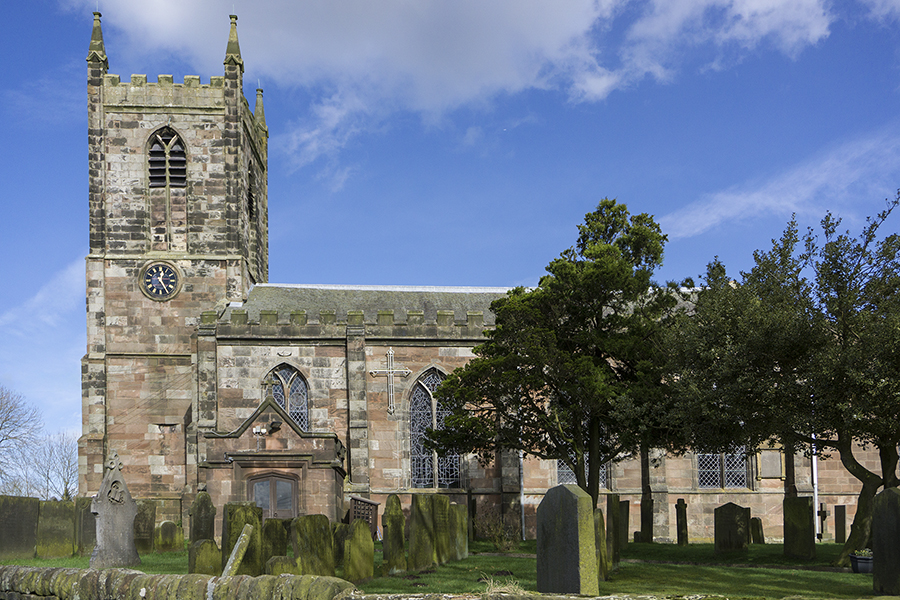 |
| St. Leonard's, Ipstones |
 |
| St. Leonard's, Ipstones |
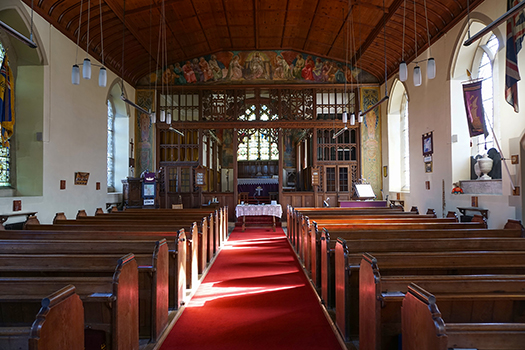 |
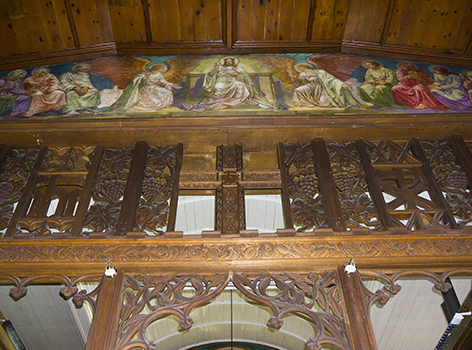 |
|
| The Nave | The Screen | |
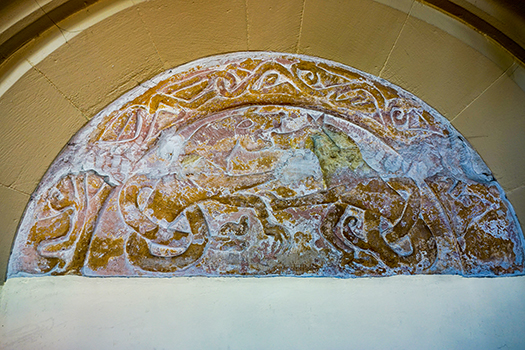 |
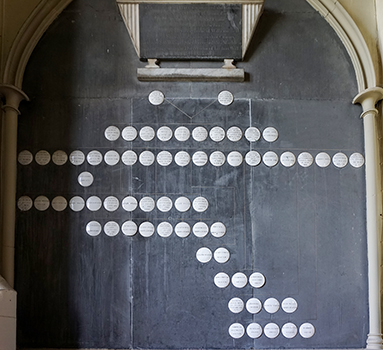 |
|
| Early 12th century Tympanum | The Sneyd Family Tree | |
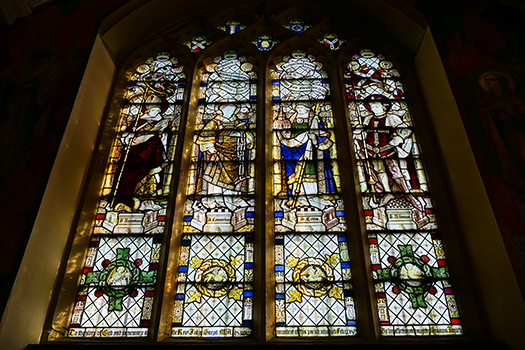 |
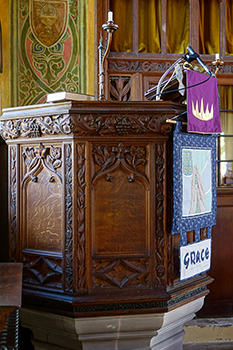 |
|
| East Window to the memory of the Revd. John Sneyd | The Pulpit |
Ipstones is not mentioned in the Domesday Book but the carved tympanum shown in the photograph shows that there was a stone church on this site in the early 12th century. At this period, Ipstones with Foxwych formed a manor held by the Verdon family of Alton. The tympanum shows two dragons in a style commonly found in Britain just after the Norman Conquest, suggesting a date between 1100 and 1125. The original Norman church was demolished and the building that followed was largley removed when St. Leonard's was rebuilt between 1787 and 1792 at the expense of John Sneyd. The tympanum seems to have been rescued at that time and placed in its current position on the south wall. A further restoration took place in 1877 with George Gilbert Scott junior as the architect. The vicar from 1861 was R.H. Goodacre I, a supporter of the High Church 'Oxford Movement' and he gave the church a more Gothic appearance. He was succeeded by his son, R. H. Goodacre II, who was vicar from 1887 to 1916; he continued the work by rebuilding the chancel in 1902. The architect for this was Gerald Horsley.
The church has an unusual family tree with individuals shown on enamel plaques on a slab of slate. It has been restored recently. It relates to a cadet branch of the Sneyd family of Keele Hall. The family tree was constructed for the Sneyds of Ashcombe Park and Ipstones. The Revd. John Sneyd was vicar of Ipstones from 1833 to 1861. He was the second son of William Sneyd of Ashcombe Park and rented Basford Hall in Ipstones. Sneyd was not only vicar but, as was common at the time, was active as a magistrate. He was in the local Yeomanry which was involved in putting down riots in Stoke-on-Trent in 1842. He was also involved in committees connected with health, education, canals, roads and railways and carried out a census of Ipstones in 1839. He became rural dean of Leek in 1837.
There is also a chart showing nine generations of the Clowes family from 1625 to 1903.
Ipstones was the birthplace of the poet Elijah Cope, the son of a gardener. Cope taught wood carving and was an authority on the folklore of the Moorlands. He composed an elegy on the death of George Heath, who was buried at Horton. Elijah Cope died in 1917.
The wall paintings in the sanctuary and on the chancel arch are by J. Eadie Reid, a member of the Arts and Crafts movement. They were painted in 1917 as a memorial to the second Mr. Goodacre. Reid produced paintings for many churches. The best known was that at St. Mark's, Belgrave Gate in Leicester. St. Mark's is now closed so the paintings at Ipstones are Reid's finest work available to public view. The painting in the sanctuary, depicting the Annunciation, was restored a few years ago.
James Brindley, the canal engineer responsible for the Brigdewater and Trent & Mersey canals, spent his last night away from home at Ipstones. He was known to be suffering from diabetes towards the end of his life. In 1772, returning home from inspecting progress on the Trent & Mersey, he was taken ill and spent the night at the Old Red Lion in Ipstones. The next day he continued to his home but died a few days later.

Details given in the church on noticeboards.
The Buildings of England, Staffordshire, by Nikolaus Pevsner, Penguin,
1974, ISBN 0 14 071046 9
The Old Parish Churches of Staffordshire, by Mike Salter, Folly Publications,
1996, ISBN 1871731 25 8